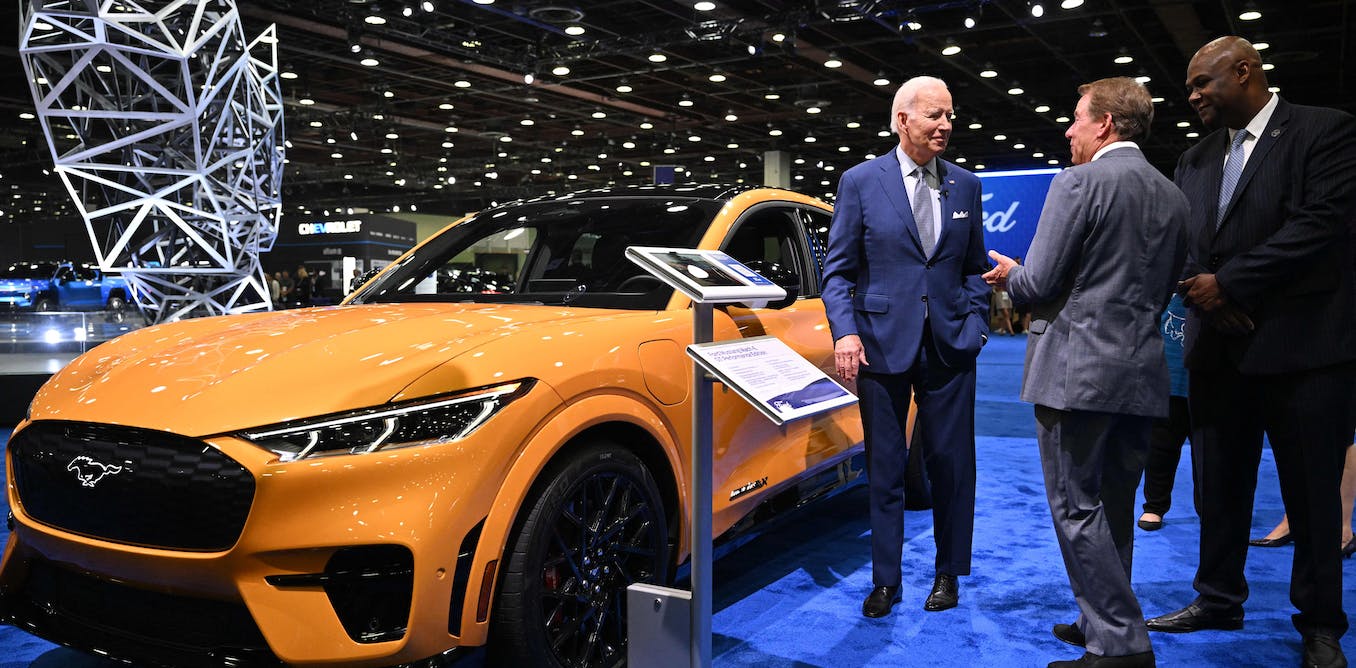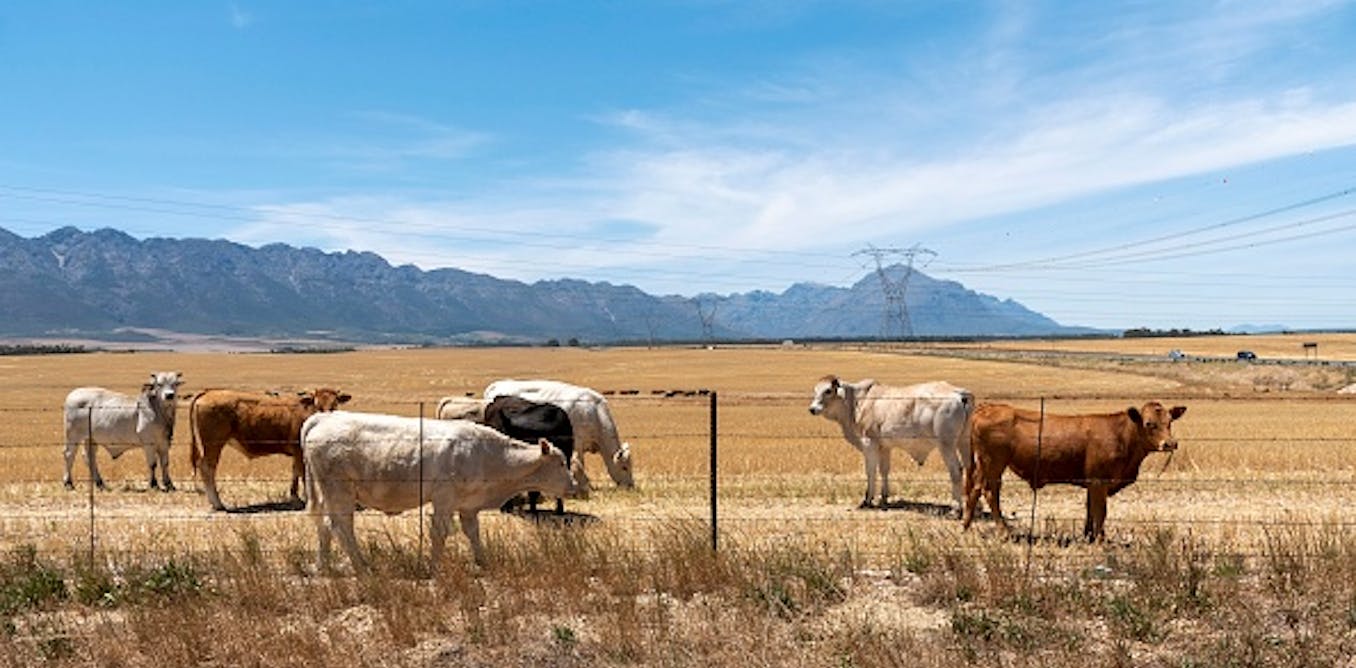One big question keeps surfacing after the Biden administration announced plans to raise auto standards so sharply they would likely boost electric vehicle production to 67% of all new passenger vehicle sales in under a decade: Can automakers pull that off?
The proposal would require a huge change in production and consumer choice. To put it in perspective, in 2022 about 6% of U.S. passenger vehicle sales were all-electric.
I study the electric vehicle industry and policy. Here’s why I think the Environmental Protection Agency’s plan can succeed.
Automakers have met tough targets before
Automakers typically push back against tougher rules and often lobby to get standards relaxed. However, U.S. car companies have also shown that they can meet ambitious goals.
When California began requiring that car companies sell a certain percentage of zero-emissions vehicles, its initial target translated to about 15% of all new car sales by 2025. Automakers quickly exceeded that goal. By 2022, nearly 19% of California’s new light-duty vehicle sales were electric. In response, the rules were ramped up last year to 100% of all new cars by 2035.
U.S. automakers are already ramping up to meet the California rules, as well as aggressive requirements in Europe and China.
The U.S. Environmental Protection Agency can’t set quotas for EV sales, but it can require automakers to progressively lower total greenhouse gas emissions from the vehicles they sell. Emission rates are inherently tied to fuel economy – more fuel-efficient vehicles emit less carbon dioxide, a greenhouse gas that is warming the planet.
The new federal proposal, which still faces a comments period and could change before being finalized, would set emissions restrictions tight enough that it will effectively result in about two-thirds of new light-duty vehicles sold by 2032 being electric. That’s almost as aggressive as rules in the European Union. A second EPA proposal, also announced April 12, 2023, affects heavy-duty vehicles in the same way, but sets a lower target.
The government is offering lots of incentives
While the proposed rules are strict, the federal government has provided unprecedented support over the last year and a half to help meet demand for EV battery parts and production, computer chips and charging infrastructure.
The Bipartisan Infrastructure Law, in conjunction with 2022’s Inflation Reduction Act, are providing billions of dollars in grants and loans for EV and battery manufacturing, plus tax breaks for EV buyers. The infrastructure law also allocated US$7.5 billion to build a network of EV chargers throughout the country under the National Electric Vehicle Infrastructure program.
In an ideal world, “carrots” like these would be enough to encourage automakers to embrace the technological shift. But the EPA’s new greenhouse gas emissions standards represent the “stick” designed to guarantee the shift happens.
EVs aren’t just luxury anymore
Making EVs affordable will be crucial to success. Tightening fuel economy and greenhouse gas emission standards is known to increase the average price of new vehicles. For now, EVs have a higher sticker price than gasoline vehicles, which is a major barrier to their adoption.
The cost of batteries is one reason EV prices are higher. But there’s another important reason, and it may be changing: the types of electric vehicles being produced.
Many of the current EV models are large or luxury vehicles. Those vehicle classes have higher profit margins, meaning automakers make more money off the sales, which helps them invest in production.
But more entry-level EVs are coming on the market soon. And many of them, such as the Chevrolet Bolt, are already fairly cost competitive with comparable gas cars – and cheaper overall when taking into account lower energy and maintenance costs.
Drew Angerer/Getty Images
Increasing EV production will bring down costs over time as manufacturing processes improve and sales and competition grow.
In the meantime, the Inflation Reduction Act’s tax credits can help narrow the current price gap between certain EVs and gas vehicles. Buyers can get up to $7,500 for qualifying new electric vehicles.
Investments are already underway
Meeting the EPA’s standards won’t be easy, and the industry will face other challenges. For example, the U.S. needs to train workers in new skills, both for auto production and for charger installation, and it will need to boost renewable energy production to power EVs cleanly.
The ramp-up will also come with costs. Ford announced in early 2023 that its EV division had lost $3 billion in each of the previous two years and would likely lose a similar amount in 2023 as it invested in new production.
But Ford also said it expects to see an 8% profit margin by 2026 and to boost production that year to 2 million electric vehicles. Ford and several other automakers have announced large investments in electric vehicle capabilities. A recent Reuters analysis found that 37 global automakers expected to invest $1.2 trillion in EVs, batteries and materials through 2030.
John Bozzella, CEO of the industry trade group Alliance for Automotive Innovation, said automakers were committed to the EV transition and would work with U.S. regulators, but he also called the EPA plan “aggressive by any measure.” Whether it’s feasible, he said, will depend in part on how the U.S. manages charging infrastructure, supply chains and the resilience of the power grid.
The proposed rules provide clear targets
The aggressive nature of the EPA’s proposed regulation is a major departure from the norm. Efficiency standards have traditionally meant incremental improvements in vehicle technologies, like increasing engine efficiency. The proposed rule likely will be challenged once finalized, and since it isn’t written into law, there’s a chance it could be reversed by future administrations.
But these standards can help companies set goals for the future by providing clear targets. Failing to meet EPA rules can come with tough penalties, up to $45,000 per vehicle per day in some cases. That’s enough to very rapidly put any automaker out of business.
In my view, the updated standards are necessary to ensure that the U.S. can keep pace with EV adoption around the world.




